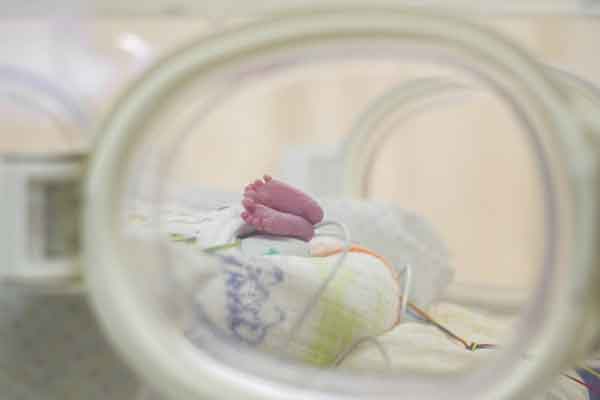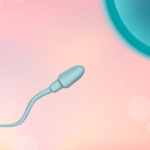Summary of this article
Threatened premature labor is a condition that is on the verge of premature birth. Causes include intrauterine infection, multiple pregnancy, late-age childbirth (over 35 years old), cervical incompetence, uterine fibroids and other uterine diseases and abnormalities, and lifestyle disorders. Common symptoms are abdominal distension and pain. Treatment is mainly by administering oral or intravenous uterine contraction control drugs.
- Difference between miscarriage and premature birth
- Preterm labor and threatened preterm labor
- Causes of premature birth or threatened preterm labor
- Signs and symptoms of preterm labor
- Diagnosis of threatened preterm labor
- Treatment for threatened premature labor
- Survival rate of babies born prematurely
- Can threatened premature birth be prevented?
- Who is more likely to have preterm labor
- Summary
The difference between miscarriage and premature birth
Preterm birth is birth that occurs before full term (37 weeks 0 days to 41 weeks 6 days of pregnancy). It is said that preterm birth occurs in about 5% of pregnancies.
The difference between miscarriage and premature birth varies by country. In Japan, the distinction between miscarriage and premature birth is made at 22 weeks and 0 days of pregnancy. This is because babies born before 22 weeks and 0 days of pregnancy have an extremely high chance of not being able to survive outside the mother’s womb. Births between 22 weeks and 0 days of pregnancy and 36 weeks and 6 days of pregnancy are called premature births, and births up to 21 weeks and 6 days of pregnancy are called miscarriages.
Babies born before 37 weeks are called premature babies. Based on the weight of the baby at birth, babies weighing less than 2500g are classified as low birth weight babies, those weighing less than 1500g are classified as very low birth weight babies, and those weighing less than 1000g are classified as extremely low birth weight babies.
The reason why premature birth is a problem is because it increases the chances of the baby having a disability. If a baby is born before the expected due date, the organs are not yet mature, so there is a risk of developing retinopathy of prematurity or intracranial hemorrhage. There is also a large burden on the immature intestines and lungs, and even if the baby is discharged from the hospital after birth, there is a risk of developing cerebral palsy or requiring oxygen administration.
Also, babies born prematurely are lighter in weight and have weaker immune systems, making them more susceptible to infections.
The average weight of a baby born at 22 weeks of pregnancy is around 500g, and in this case, long-term treatment in a NICU (neonatal intensive care unit) is required. Also, the earlier a baby is born, the higher the chance of developing serious disorders later in life. Particular care is required when the baby is born before 30 weeks of pregnancy.
That is why it is so important for pregnant women to undergo regular health checkups for early diagnosis and prevention in order to prevent their baby from being born prematurely.
Preterm birth and preterm labor
Threatened premature labor means that premature labor is imminent, that is, the state of being on the verge of premature labor. There is an abnormal feeling of tightness in the lower abdomen, abdominal pain, bleeding, and in some cases, the cervix is about to open and the water breaks. If the amniotic fluid decreases due to the water breaking, the baby will be compressed by the mother’s body, so it can be said to be a very dangerous condition.
Threatened premature labor can be divided into two categories: one in which appropriate treatment will stabilize the uterus and prevent premature labor, and one in which premature labor is unavoidable.

Causes of premature birth and preterm birth
The causes of premature birth and threatened premature birth lie in both the baby and the mother, and are mutually related. The main causes include intrauterine infection, multiple pregnancy, advanced maternal age (over 35 years old), cervical incompetence, uterine fibroids and other uterine diseases and abnormalities, and poor lifestyle choices.
Additionally, mothers who have previously experienced premature birth are more likely to have premature births in subsequent pregnancies.
Although rare, premature birth can be induced artificially. When the condition of the mother or fetus, or both, deteriorates due to pregnancy-induced hypertension, placenta previa, placental abruption, etc., or when the baby cannot survive in the mother’s womb for some reason, a premature birth is planned to save the life of the mother and the fetus.
Intrauterine infection
Intrauterine infection occurs when bacteria enter the uterus from the vagina. If the bacteria infects the uterus and causes inflammation, it becomes chorioamnionitis. In that case, there is an increased risk of inducing membrane rupture and uterine contractions (labor).
Sexually transmitted diseases are also a cause of preterm labor.
Multiple pregnancy
A multiple pregnancy is when two or more fetuses are carried in one pregnancy. If you are pregnant with twins or triplets, the uterus becomes larger and there is a high possibility of premature birth. It is said that there is a higher chance of the baby having a disability or being at risk to life during childbirth in a multiple pregnancy, so some facilities perform planned births by Caesarean section.
Late-life childbirth (childbirth at age 35 or older)
Recently, as more women are entering the workforce, people are getting married later in life and giving birth at an older age is becoming more common.
When older women become pregnant, the aging of their eggs increases the chances of the baby developing trisomy 21 (Down syndrome) due to chromosomal abnormalities in the fertilized egg.
If the baby has a chromosomal abnormality, there is a higher chance of miscarriage, premature birth, or stillbirth.
To that end, you may want to consider NIPT (non-invasive prenatal testing ), which involves taking a sample of the mother’s blood and testing the baby’s genes.
Cervical incompetence
Generally, the cervix opens after labor, but if the cervix opens without labor, it is called cervical incompetence. In this case, the baby will come out before labor begins.
Also, although a short cervix is clearly a cause of premature birth, it is not clear what causes the cervix to become short.
If you have been diagnosed with cervical incompetence, the risk of premature birth can be reduced by having surgery to tie off the cervix, the entrance to the uterus (cervical cerclage).
Uterine diseases and abnormalities
Disease or abnormalities in the shape of the uterus itself can make premature birth more likely. For example, if the shape of the uterus is deformed due to cervical cancer or uterine fibroids, this can lead to abnormalities in the size and position of the placenta. Mothers who have undergone a surgery called cone biopsy also tend to be more likely to have premature birth.
Disturbances in lifestyle
Poor lifestyle habits, such as becoming too thin through unreasonable dieting, drinking alcohol or smoking during pregnancy, can also cause premature birth. This is because there is a risk of the baby not receiving enough nutrition resulting in fetal growth restriction. Fetal growth restriction can cause polyhydramnios, which can lead to water rupture before labor begins. Excessive dieting, drinking alcohol or smoking are major disadvantages for the baby. If the mother is aware of her poor lifestyle habits, they can be improved, so to avoid regrets later on, it is best to change your lifestyle habits as soon as possible.
Pregnancy-induced hypertension
The development of hypertension during pregnancy is called pregnancy-induced hypertension. Hypertension that exists before pregnancy or that develops before the 20th week of pregnancy is called pregnancy complicated by hypertension. Hypertension that develops after the 20th week of pregnancy is called “gestational hypertension.”
This disease occurs in about 5% of pregnant women. Early onset before the 34th week of pregnancy can easily become severe, so care must be taken. If the condition becomes severe, the mother is at risk of cerebral hemorrhage, seizures, and disabilities, and in the worst case scenario, may die.
If you develop pregnancy-induced hypertension, it can be dangerous for both you and your baby, so special care is required.
Signs and Symptoms of Preterm Labor
Preterm labor may or may not have obvious signs and symptoms. Here we will briefly explain the signs of preterm labor that are hard to notice and the symptoms of preterm labor.
Signs of Preterm Labor
Signs of preterm labor that are hard to notice include urinary incontinence and fever.
Urinary incontinence occurs when the enlarging uterus presses on the bladder. It can be difficult to distinguish between a small amount of urine and amniotic fluid leaking due to ruptured membranes, so be careful.
In the womb, the baby is in amniotic fluid, but when the membrane that encases the amniotic fluid breaks, the amniotic fluid flows out. If the amount of amniotic fluid in the womb decreases due to the water breaking, it can cause the baby to feel pressured. Also, if you don’t notice a small amount of water breaking and it continues to break, there is a high risk of bacterial infection.
Fever is an important sign of bacterial infection, such as bacterial vaginosis or chorioamnionitis. Although it is possible to have an infection without a fever, caution is required if a fever of over 38.0°C is observed.
There have been no reports of a relationship between vaginismus and preterm labor.
Symptoms of preterm labor
The most common symptoms of preterm labor are abdominal bloating and pain. These are caused by uterine contractions and occur regularly and frequently. The water may break before the uterine contractions begin, but it may also happen at the same time as the water breaks.
In addition, genital bleeding may occur. In rare cases, if the preterm labor is not stopped and premature labor is imminent, the cervix may open wide and the baby’s head may be visible.
Diagnosis of preterm labor
According to the guidelines, a diagnosis of threatened preterm birth is made if “regular uterine contractions are observed and there is progress in the dilation and effacement of the cervix during the pregnancy between 22 weeks 0 days and 36 weeks 6 days, or if the cervical dilation is 2 cm or more at the initial examination and it is determined that there is a high risk of preterm birth.”
The specific risk of premature birth is evaluated using the premature birth index, which is a score for each of uterine contractions, water rupture, bleeding, and cervical dilation. The higher the score, the higher the risk of premature birth.
Treatment for preterm labor
Treatment for threatened premature labor involves the use of oral or intravenous uterine contraction control medications to prevent the cervix from opening.
If the cause is a bacterial vaginal infection, antibiotics may be used.
If the cervix is not open very much, treatment can be done on an outpatient basis, but if the uterine contractions are strong and the cervix is further dilated, bed rest is required and the patient will be hospitalized and given intravenous treatment with drugs to suppress uterine contractions.
Survival rate of babies born prematurely
Babies born before 27 weeks and 6 days need to be admitted to the NICU (neonatal intensive care unit) because their vital organs are not yet fully developed.
Babies born between 28 weeks 0 days and 33 weeks 6 days often require care in the NICU (neonatal intensive care unit) immediately after birth.
The baby’s survival rate is greatly influenced by gestational age.
The survival rate increases with the length of gestational age: 66.1% at 22-23 weeks, 86.5% at 24-25 weeks, 94.0% at 26-27 weeks, 96.7% at 28-29 weeks, and 97.5% at 30-31 weeks.
When a baby is born prematurely, there is something called the “32-week wall.”
32 weeks corresponds to the ninth month of pregnancy (32-35 weeks) and refers to the time it takes for a baby born prematurely to catch up with a baby born at full term.
The chance of catching up at the age of one is 21% if born before 32 weeks, and 69% if born between 32 and 37 weeks, so even though they are both premature births, 32 weeks is a key point.

Can preterm labor be prevented?
Preterm labor can occur due to factors related to either the mother or the baby, so there is no way to absolutely prevent it.
What pregnant women can do to prevent preterm labor as much as possible is to not push themselves too hard, avoid stress and overwork, and lead a regular life, including eating and sleeping. There are also reports that long working hours and excessive movement are also related to preterm labor.
There are no particular postures that you should avoid, but you should avoid standing for long periods of time, working in a slouched position, and lifting heavy objects.
Smoking has a negative effect on the development of the baby and is considered a risk factor for premature birth. Pregnant women who smoke should quit smoking now.
Regular prenatal checkups by your obstetrician are also extremely important in preventing premature labor. During prenatal checkups, internal examinations and ultrasound scans are used to check for signs of premature labor. Be sure to attend your prenatal checkups.
Who is at risk for premature birth?
People who are at higher risk of premature labour include:
- Those who have had a premature birth in the past
- People who have had a cone biopsy
- Multiple pregnancy
- People with bacterial vaginosis
- Those who were diagnosed with a short cervix during an ultrasound scan during pregnancy
If any of these apply to you, taking preventative measures may be effective in preventing premature birth. It is a good idea to tell your doctor in advance to reduce the risk of premature birth even if only slightly.
Precautions during the second trimester of pregnancy
Preterm labor in the second trimester is a serious issue that can affect the life or death of your baby. If you experience any of the signs or symptoms of preterm labor listed above, contact your doctor immediately.
Precautions during the later stages of pregnancy
During a normal pregnancy, there is little bleeding. If you experience irregular vaginal bleeding, it is possible that your cervix is beginning to open, so you should be careful. If bleeding causes a hematoma in the uterus, the risk of infection increases.
Also, if the balance of bacteria in the vagina is disturbed and a bacterial infection occurs, vaginal discharge may increase. In such cases, treatment may be required, so please consult your obstetrician-gynecologist.
Summary
Above, we have explained the causes and symptoms of threatened premature labor. There is no absolute way to prevent it, but to prevent it as much as possible, try not to push yourself and try to lead a regular pregnancy life as much as possible.
During prenatal checkups, internal examinations and ultrasounds are used to check for signs of premature labor, so make sure to have regular checkups to have a healthy pregnancy.
【References】
- Japan Society of Obstetrics and Gynecology – General Overview
- Japan Society of Obstetrics and Gynecology – Obstetrics and Gynecology Guidelines 2020
- MDS Manual Pediatrics – Preterm infants
- Today’s Clinical Support – Preterm Labor
- Wakayama Medical University, Department of Obstetrics and Gynecology – Obstetrics [Preterm Labor]
Article Editorial Supervisor

Dr Hiroshi Oka
NIPT specialist clinic, MD
Graduated from Keio University, School of Medicine
 中文
中文






















